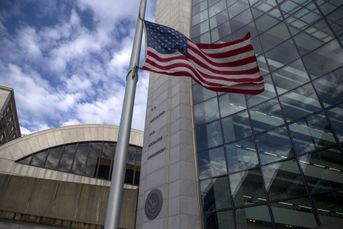State pensions weaken for fourth straight year
Funding for state retirement plans fell for a fourth straight year as insufficient contributions and inadequate investment gains…
Funding for state retirement plans fell for a fourth straight year as insufficient contributions and inadequate investment gains overwhelmed cuts that more than 40 legislatures have made to benefits since 2007.
The median funding ratio was 71.7% for the year through June 2011, down from 74.3% the prior period, data compiled by Bloomberg show.
Taxpayers in Illinois, the weakest of the group for the fourth straight year at 43.4%, are paying the price. The relative borrowing cost of the state and its localities is almost double the five-year average.
More than 30 states, including California and New Jersey, had less than 80% of assets needed to meet obligations to workers and retirees, the data show.
That left them short of the threshold for sustainability of their plans.
“A lot of the states have done the easiest stuff first,” Christopher Mier, chief municipal strategist at Loop Capital Markets LLC, said regarding benefit cuts. “From there, it gets progressively more difficult.”
The funding drop shows the challenge states face in trying to recover from investment losses suffered during the recession that ended more than three years ago. The S&P 500 sank 38.5% in 2008, the most since 1937.
NOT ENOUGH
Lawmakers have lifted retirement ages, forced workers to contribute more to plans and suspended cost-of-living increases.
Yet more than 30 states still failed to deposit enough into their systems last year as they struggled to balance budgets, according to Mr. Mier.
“If they had been diligently making their contributions, there wouldn’t have been this crisis,” said David Draine, a senior researcher in Washington at the Pew Center on the States. “It’s the states that came into the recession with poorly funded plans and a history of failing to make sufficient contributions that were already in a very vulnerable spot.”
Estimates of states’ combined pension deficit have ranged from $1 trillion to as much as $4 trillion as lawmakers and regulators debate the appropriate rate for discounting liabilities. The Governmental Accounting Standards Board has adopted new rules for next year that could swell the gaps.
LOWER RATES
Funding levels are falling as lawmakers cave to pressure to lower assumed rates of return amid volatility in performance.
New York, which has consistently made its actuarially required payments, had less than 100% of the assets it needed last year after lowering its rate to 7.5%, from 8%, Bloomberg data show.
The board of the California Public Employees’ Retirement System, the largest public pension fund, with $244 billion of assets, voted in March to cut its rate to 7.5%, from 7.75%. The fund earned 1% in the one-year period through June 30, after gaining 21% a year earlier.
ADDING STOCKS
Although corporate plans have been cutting equities in favor of fixed income, public funds have done the opposite.
They have increased stocks to nearly 70% of portfolios on average over the past decade as they seek higher returns, according to the Center for Retirement Research at Boston College.
State systems are also boosting stakes in alternatives such as hedge funds, Cliffwater LLC, an investment advisory firm, said in a June report.
“They are essentially doubling down to earn their way out of this problem, and it’s not working,” said Kimberlee Lisella, vice president of customized strategies at Cutwater Asset Management Corp., which oversees $32 billion. “These strategies have had mediocre returns at best, and the volatility has been off the charts.”
Learn more about reprints and licensing for this article.








